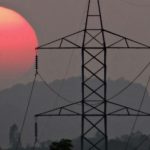Something is going to make the planning of regional power generation and associated markets even harder: the ability of big data users to shift their demand across the globe quickly, based on price. Ira Joseph at CGEP peers into the near future to ask some difficult questions. When such power demand can “at the push of a button” migrate long distances, how do you make predictions for local capacity needs? And today, market design in most … [Read more...]
EU now has 9,000+ “energy communities”: smart, decentralised, flexible generation and consumption
The goal of the EU’s “Clean Energy for all Europeans package” (CEP), adopted in 2019, is to improve the functioning and design of Europe’s energy markets and systems. Luca Arfini, writing for ESCI, explains how, as part of the CEP, new market actors called “active customers/consumers and citizens” and “energy communities” are being established. As variable renewable generation grows, the whole system needs to be more decentralised, smarter and … [Read more...]
Make EV batteries bidirectional, get GWs of storage for the Grid
How to cope with the hourly, daily and seasonal variation in demand as regions electrify more, depend more on variable renewables like wind and solar, and cut baseload fossil generation? Storage shifts load nicely. But why build grid-scale batteries when millions of little batteries in our EVs are sitting idle in our driveways for most of the time? As Mark Specht at the Union of Concerned Scientists explains, it’s why in California a bill is … [Read more...]
ReDREAM: Horizon-backed project gives consumers control of local renewables, prices and demand
The ReDREAM project, funded by EU Horizon 2020, wants to put consumers at the centre of the energy market. As Steve Gillman explains, people and businesses can shape their supply and demand by owning local renewable generation and combining that with smart systems that give visibility of prices and generation to enable control of demand, right down to the level of heat pumps, washing machines, hot water systems and EVs. A 30-household pilot is … [Read more...]
Wind (and Solar) need their own Financial Transmission Rights to hedge their unique congestion risks
Financial Transmission Rights (FTRs) help generators and load-serving entities hedge congestion-related risk. Transmission congestion causes a divergence between wholesale power prices where it is generated and the trading hubs where it is delivered and sold. Because the congestion, and therefore the risk, varies over time it is particularly important to variable renewables. That uncertainty increases investor risk which potentially slows … [Read more...]
Health benefits of Wind Power: first replace the most polluting fossil plants, not the most expensive
It makes economic sense, when intermittent wind (or solar) generation rises, to turn down the most expensive fossil plants. Or does it? Join the dots to health costs and it may make more economic sense to turn down the most polluting plants first. Jennifer Chu at MIT describes research there that creates models and scenarios to interrogate that theory. Using hourly generation records, pollution and health cost data from across the U.S. they found … [Read more...]
Solar PV windows on highly glazed skyscrapers can cut energy by 40%+
Around a third of the world’s energy consumption and CO2 emissions come from buildings. Highly glazed skyscrapers and buildings may look beautiful and let in plenty of light, but waste a lot of energy due to the extra cooling needed in summer and heating in winter. Modern skyscrapers can have window-to-wall ratios of 70%+. But modern thermally efficient photovoltaic windows not only provide insulation but turn the absorbed light into power. Wayne … [Read more...]
IEA says peak coal is a few years away, but China’s demand for energy suggests not
Lucas Davis at the Haas School of Business questions the IEA’s optimism revealed in its latest World Energy Outlook 2022 that predicted coal will peak in the next few years. In 2021, global coal consumption increased 5% and global electricity generation from coal reached an all-time high. China is the main driver - last year over half of all coal-fired electricity generation came from China - and its energy demand keeps rising. Between 2000 and … [Read more...]
Russia-Ukraine: modelling the consequences for the European electricity market to 2050
Alex Schmitt, Christoph Kellermann, Calvin Triems and Huangluolun Zhou at Energy Brainpool have used their modelling tools to update their predictions of how the European electricity market will develop over the next 30 years, given a target of 99% emission-free generation in 2050. Projections are made on generation (mix and volumes) and price. The big change from their last predictions is the Russia-Ukraine war and Europe’s determination to ramp … [Read more...]
Solar + Storage Hybrid plants are poised for explosive growth in the U.S.
At the beginning of 2021 the U.S. had 73 solar and 16 wind hybrid projects, amounting to 2.5GW of generation and 0.45GW of storage. By the end of 2021, over a third of the 675GW of solar in the grid connection queue were hybrids, and 19GW were wind hybrids. Only one in four typically get approved, built and connected. But that still points at a twenty-five-fold increase in hybrid generation. It’s why Joachim Seel, Ben Paulos and Will Gorman at … [Read more...]
China should comfortably meet its 2030 Renewables target. But its emissions?
The long Covid lockdown seems to have had little effect on China’s electricity generation growth. In 2021, total generation increased by about 750 TWh (that’s around 1.3 times Germany's absolute total). Solar PV capacity grew by 53 GW last year (equal to the total installed solar capacity in Germany). Half of all offshore wind turbines installed worldwide in 2021 were off the coast of China: the strong additions were accelerated by the January … [Read more...]
India kick-starts wholesale electricity market reforms
India’s wholesale electricity market is no longer fit for purpose according to Dheer Patel of the Regulatory Assistance Project (RAP). Long term procurement contracts are forcing distribution companies (discoms) to buy expensive energy when cheaper alternatives are readily available. So the Central Electricity Regulatory Commission (CERC) is launching a six-month pilot, starting 1st April, that enables “least-cost dispatch” of all centrally … [Read more...]
Britain has shifted 30% of its electricity away from fossil fuels in just nine years
Britain’s extraordinary energy transition is in part down to increased energy efficiency: put simply, less electricity was needed, whatever the source. But coal is still essential during spikes in demand. Given coal generation is due to be phased out by 2025, the country will need to find alternative power sources to cope during extreme weather events. And that overall decline in electricity demand is sure to be reversed as more vehicles and … [Read more...]














